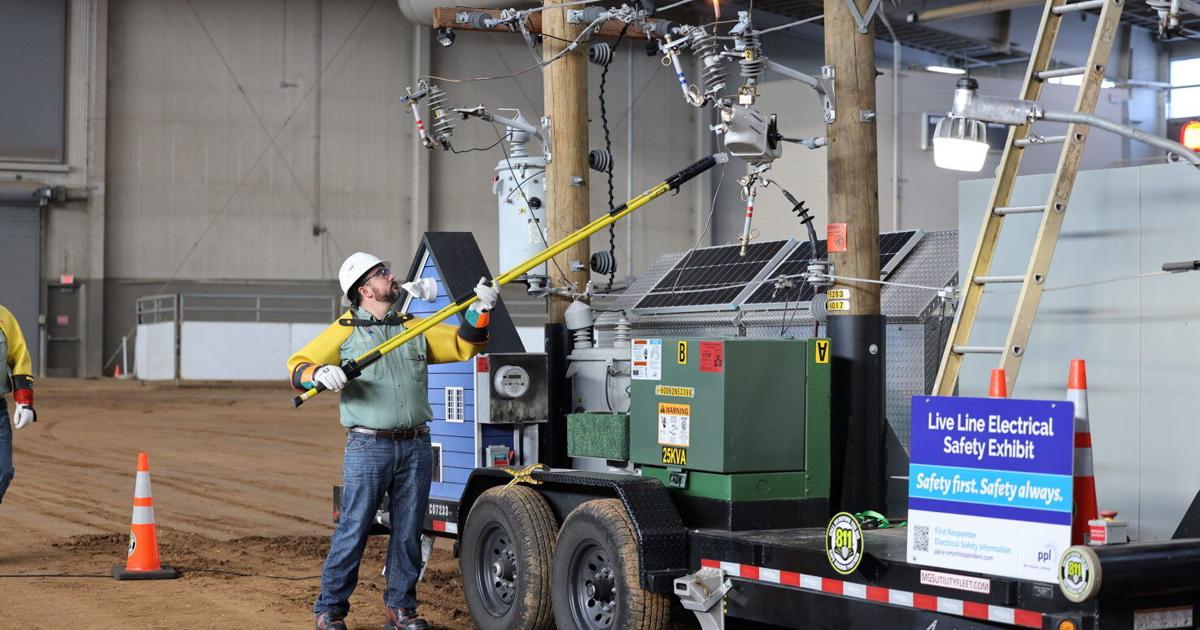On a busy farm, it's easy to overlook electrical wiring.
However, to avoid serious injury or death, farmers should exercise caution around them.
Doug Haupt, public safety manager for PPL Electric Utilities, shared some tips for farm electrical safety in a recent interview.
Haupt leads a team that conducts safety demonstrations throughout the company's service area, using live, trailer-mounted power lines to demonstrate safety risks.
Haupt and his team have moderated the program over 650 times since 2015.
The presentations reached an estimated 72,000 first responders, contractors and electric customers, including about 100 people at the Pennsylvania Farm Show on Jan. 9.
Know the location of electrical wires and stay away from them.
Power lines that run across fields or on the edges of farms are often located in places where a malfunctioning combine, sprayer, grain auger or ladder could accidentally come into contact with them.
According to Occupational Safety and Health Administration standards, people should stay 10 feet away from utility lines, Haupt said.
Clearance for higher voltage transmission lines is greater, but PPL accommodates this by locating these lines at least 32 feet above the ground.
Avoid downed power lines.
PPL uses devices to detect when a power line may be down, allowing the line to be shut down quickly. In fact, the utility's team was part of the patent for the device.
Should a power line fail, Haupt recommends maintaining a distance of at least 30 meters.
The line may create a slope in the ground and send a powerful electrical current into the earth that cannot be seen, smelled, or tasted.
This ground gradient becomes more and more dangerous the closer a person gets to the fallen pipe.
If your vehicle hits a power line, stay inside the vehicle.
When exiting a vehicle, you are at risk of ground slopes and dropped lines that you may not see.
“The best advice we can give is to wait for us to make sure we get out of there and do it safely,” Haupt said.
If you notice a power line is down, you can report it at 1-800-DIAL-PPL (in PPL's service area) or 911.
Write down the ID number on a pole at a safe distance to help emergency responders find the location.
Do not attempt to repair or tamper with electrical wiring.
Electrical workers use special gloves, gauntlets and shoe covers when repairing power lines.
Normal people don't have this equipment lying around the house. In fact, they have neither tools nor protective equipment to safely contact power lines.
During the live demonstrations, Haupt's team demonstrates that normal work gloves do not provide protection against electricity.
“Some leather gloves that you can buy at hardware stores have the words 'electrically tested' printed directly on the glove, which obviously worries us a lot,” said Haupt.
Know where the utility's infrastructure ends.
PPL is responsible for the supply cable that runs from the transformer on the pole to the meter on a property.
Farms may have additional power lines running from the meter to the barn or outbuildings, but these lines are part of the farm.
If work is required on these private lines, the farmer must call an electrician. Although appropriate precautions are necessary, Haupt acknowledged that many farmers do this work themselves.
Don't forget that some electrical infrastructure, often including utility lines, is located underground.
To avoid damage and possible electric shock, homeowners and contractors are required by law to call 811 three days before beginning a digging or excavation project.
